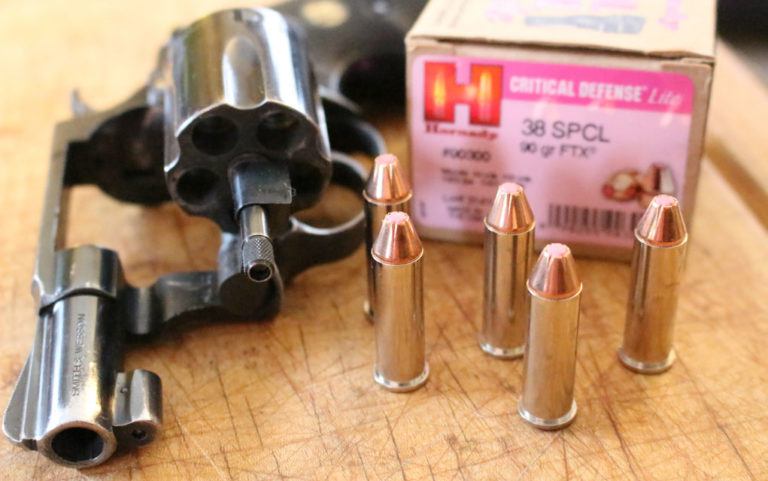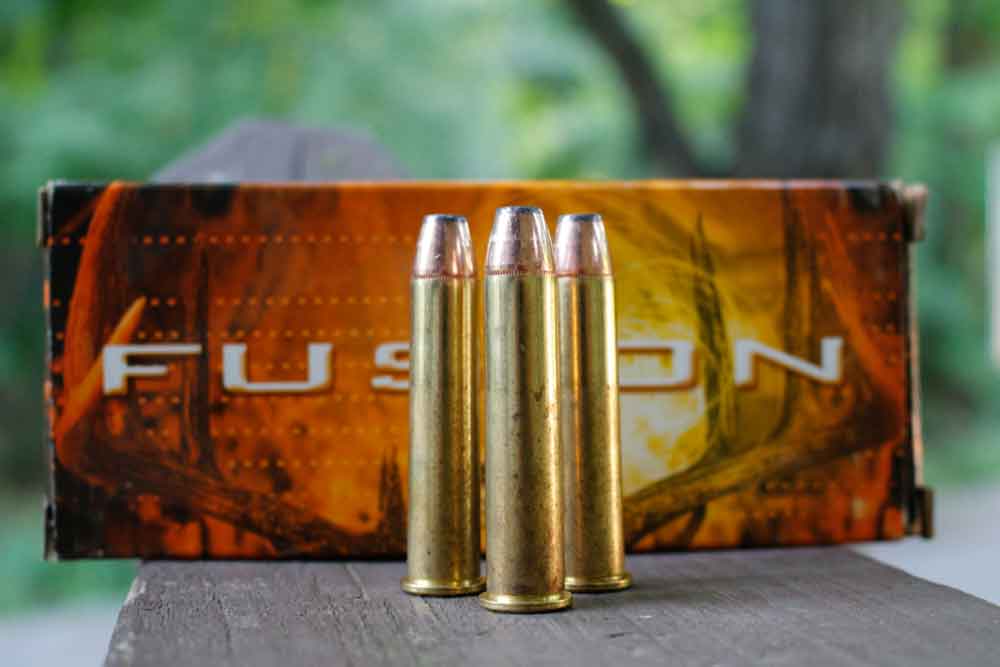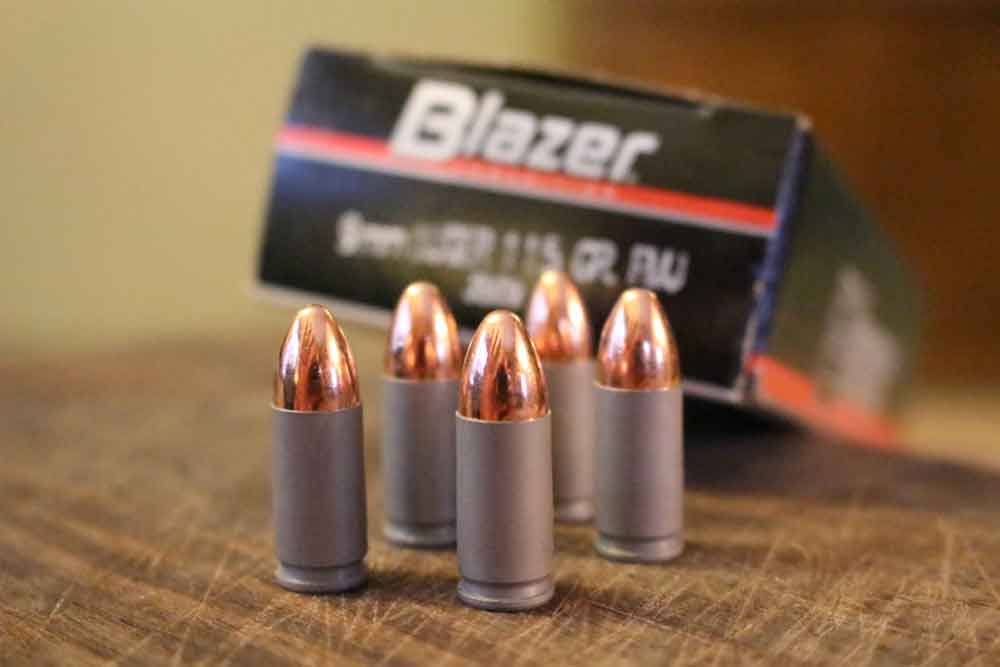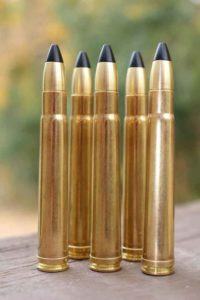
What exactly is headspace, and how is it applied to different cases?
- Headspace is distance from a case's base to the point that prevents its forward movement.
- Different cartridge types use different points on the cartridge case for headspacing.
- Rimmed cartridges use the thickness of the cartridge rim for headspacing.
- Rimless bottleneck cartridges headspace off the shoulder.
- Rimless straight-walled cartridges (most pistol rounds) headsapce off the case mouth.
- Some belted cases headspace off the belt, while others headspace off the shoulder.
What is headspacing?
Headspace is the distance from the base of the cartridge case to the point on the cartridge case that prevents the cartridge from moving any farther forward in the chamber.
To put this into real-world, appreciable terms, I’ll give some examples.

A rimmed cartridge, whether straight-walled, tapered, or bottlenecked, uses the thickness of the cartridge rim for its headspacing. It is a positive method of headspacing, resulting in very uniform results, yet these cartridges don’t often feed well in bolt- or pump-action magazine rifles.
They do very well in lever-action rifles and revolvers, as well as single-shot and double rifles. Examples include the .30-30 Winchester, .45-70 Government, .22 Long Rifle, .38 Special and .357 Magnum.

The rimless bottleneck cartridges, like the .223 Remington, .308 Winchester, .30-06 Springfield and .270 Winchester, have an extractor groove cut into the base of the case, just north of the case head. As a result, these cartridges use the shoulder of the bottleneck for headspacing.
The shoulder is typically quite steep, upwards of 15 degrees (though there are exceptions like the .404 Jeffery) to prevent the cartridge from moving any farther forward in the chamber.
The rimless bottleneck design works perfectly in almost all repeating rifles, from lever to bolt to semi-automatic, to the military’s fully-automatic, belt-fed machine guns. So long as the firearm is properly headspaced, this bottlenecked rimless design will work as intended. The groove allows for excellent extraction, too; it’s a design common among many of our most famous cartridges.
 The rimless, straight-walled cartridges comprise the most common choices for the modern, semi-automatic pistols. This style of cartridge uses the same extractor groove as its bottlenecked cousins, but since there is neither rim nor shoulder, it headspaces off the case mouth.
The rimless, straight-walled cartridges comprise the most common choices for the modern, semi-automatic pistols. This style of cartridge uses the same extractor groove as its bottlenecked cousins, but since there is neither rim nor shoulder, it headspaces off the case mouth.
Note that this feature is especially important to those who handload this style of cartridge, as the projectiles cannot be ‘roll-crimped’ into the case; they must be taper crimped, or held in place by the use of a special die which squeezes the side wall of the cartridge around the shank of the bullet.
In this type of cartridge, the case length is of utmost importance as that distance is the sole dimension responsible for setting the headspacing. If you’ve ever picked up a 9mm Luger or .45 ACP that has a rather ‘sooty’ look around the mouth of the case, it is an example of poor (excessive) headspacing, either from the firearm’s chamber being too long, or the ammunition being too short. The .40 Smith & Wesson, as well as the 9mm Luger and .45 ACP, are all examples of pistol cartridges that headspace off of the case mouth.
How Belted Cases Headspace
The belted cartridges, based on the famous Holland & Holland design of the early 1900s, are a hybrid of the rimmed and rimless design. Because the rimmed design gave such fantastic headspacing, but didn’t feed very well from a box magazine, and the London firm didn’t want to rely on a steep shoulder for headspacing (both the .375 H&H and .300 H&H have gentle, sloping shoulders), they built a small shelf, or belt of brass into the case wall, just above the extractor groove.
So, in essence, the H&H belted cartridges use a “rimmed-rimless” case, which feed perfectly in repeating rifles, yet headspace off of the rim. Thus, the shoulder dimension is irrelevant.
While it is commonly thought that the .375 H&H Rimless Belted Magnum — the .375 H&H we all know and love — was the first cartridge released that featured the now-famous belt, that isn’t true.

In 1905, Holland & Holland released the .400/.375 Belted Nitro Express, also known as the .375 Velopex, but its performance was poor in comparison to other Nitro Express cartridges of the era, so it didn’t last long.
Additionally, when the .375 H&H was released in 1912 it wasn’t alone. The .275 Holland & Holland Magnum, with a 2.500-inch case length and the same belt was released simultaneously.
Firing a 7mm projectile at some very familiar velocities, the .275 H&H Magnum is, in theory, the 7mm Remington Magnum. It just took 50 years for the shooting world to realize they wanted it!
Since the belt on any belted cartridge is there for headspacing, and has nothing to do with case strength, it’s rather ironic that there are so few belted cases that actually headspace off of that belt. Certainly the .375 H&H and .300 H&H, and I’d definitely include the .458 Winchester Magnum, .458 Lott, and the .450 Marlin, but the plethora of belted magnums (including the .300 Winchester and 7mm Remington Magnum, as well as the entire Weatherby family of cartridges) all headspace off of the shoulder.
Now, I know what you’re thinking: in the last half of the 20th century, no self-respecting “magnum” cartridge would be caught dead without its belt. It’s a very good point, but I think that the .375 H&H case was used as the basis for the brood of offspring ranging from the .257 Weatherby up to the .458 Lott — not for the ‘strength’ of the belt or for headspacing issues, but for the case capacity of the parent cartridge.
Editor’s Note: This article is an excerpt from the Big Book of Ballistics, available at GunDigestStore.com.

Next Step: Get your FREE Printable Target Pack
Enhance your shooting precision with our 62 MOA Targets, perfect for rifles and handguns. Crafted in collaboration with Storm Tactical for accuracy and versatility.
Subscribe to the Gun Digest email newsletter and get your downloadable target pack sent straight to your inbox. Stay updated with the latest firearms info in the industry.

![Best Concealed Carry Guns In 2025 [Field Tested] Wilson Combat EDC X9S 1](https://gundigest.com/wp-content/uploads/Wilson-Combat-EDC-X9S-1-324x160.jpg)


![Best 9mm Carbine: Affordable PCCs [Tested] Ruger Carbine Shooting](https://gundigest.com/wp-content/uploads/Ruger-Carbine-Shooting-100x70.jpg)
![Best AR-15: Top Options Available Today [Field Tested] Harrington and Richardson PSA XM177E2 feature](https://gundigest.com/wp-content/uploads/Harrington-and-Richardson-PSA-XM177E2-feature-100x70.jpg)
